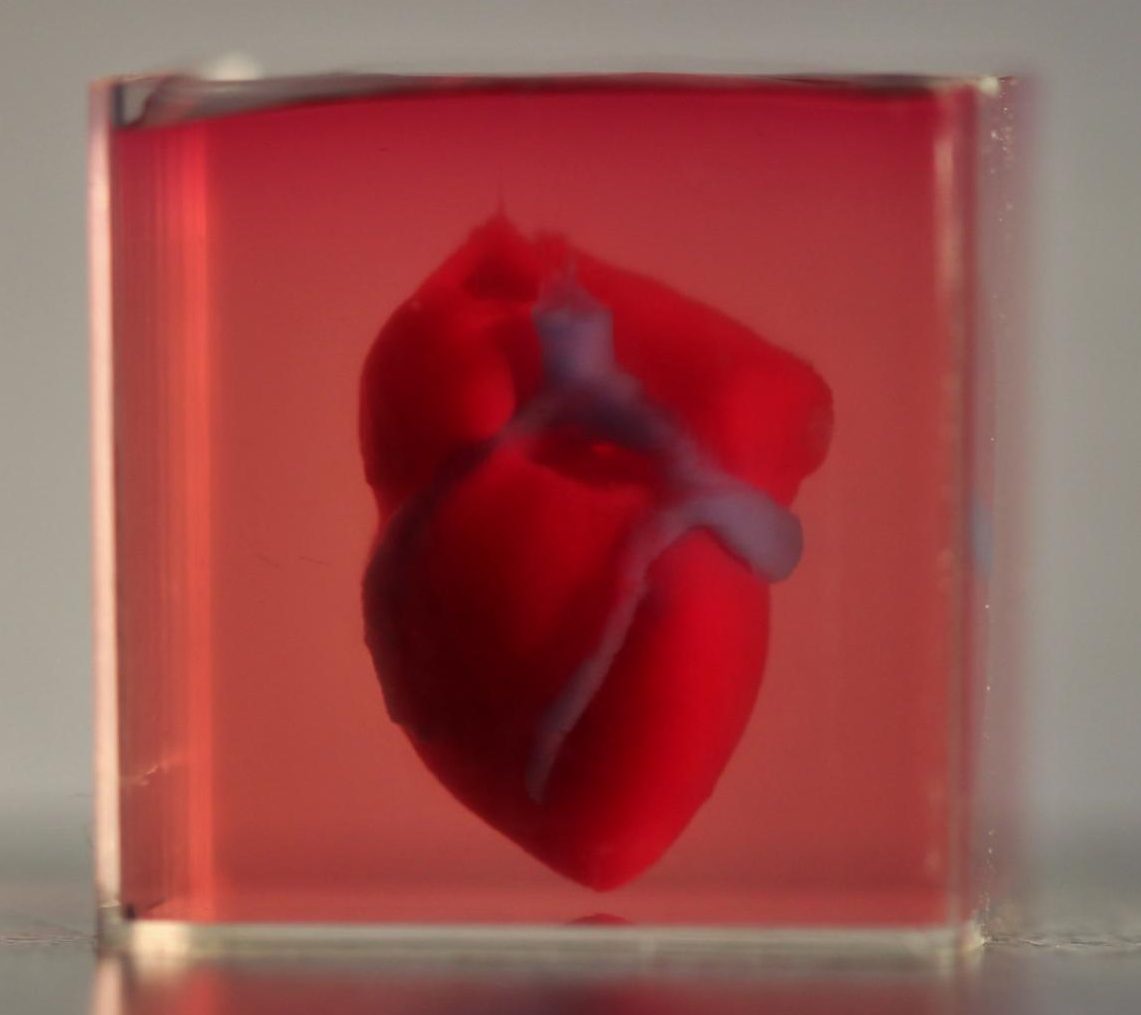Israeli researchers recently made a medical breakthrough by printing the world’s first 3D vascularised engineered heart using a patient’s cells and biological materials.
Previously, scientists in regenerative medicine were only able to print simple tissues that didn’t contain blood vessels, according to a release from American Friends of Tel Aviv University.
“This is the first time anyone anywhere has successfully engineered and printed an entire heart replete with cells, blood vessels, ventricles and chambers,” commented lead researcher Prof. Tal Dvir of TAU’s School of Molecular Cell Biology and Biotechnology, Department of Materials Science and Engineering, Center for Nanoscience and Nanotechnology and Sagol Center for Regenerative Biotechnology.
The 3D heart is made from human cells and patient-specific biological materials.
“People have managed to 3D-print the structure of a heart in the past, but not with cells or with blood vessels,” he said. “Our results demonstrate the potential of our approach for engineering personalized tissue and organ replacement in the future.”
Dvir and his team developed the 3D heart, which is currently the size of a rabbit’s organ. Dvir explained that human hearts will require the same technology. In order to prevent implant rejection, it’s critical to use “native” patient-specific materials to create tissues and organs.
“Ideally, the biomaterial should possess the same biochemical, mechanical and topographical properties of the patient’s own tissues,” Dvir noted. “Here, we can report a simple approach to 3D-printed thick, vascularized and perfusable cardiac tissues that completely match the immunological, cellular, biochemical and anatomical properties of the patient.”
The scientists plan on culturing the printed hearts and then transplanting them into animal models. But more work needs to be completed.
“The cells need to form a pumping ability; they can currently contract, but we need them to work together,” Dvir explained. “Our hope is that we will succeed and prove our method’s efficacy and usefulness.
“Maybe, in ten years, there will be organ printers in the finest hospitals around the world, and these procedures will be conducted routinely.”
Heart disease is the second leading cause of death in Canada. About 2.4 million Canadian adults age 20 and over live with diagnosed heart disease. Patients with end-stage heart failure can only survive with a transplant. Finding donors is difficult, so researchers have been looking into new ways to regenerate heart tissue.
The findings were published in a study in Advanced Science.


